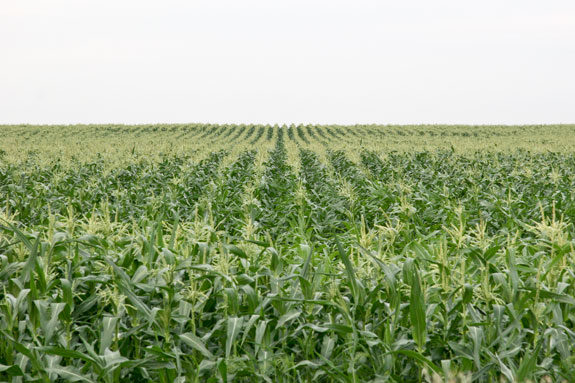Ultimately, harvest timing can be critical in achieving high-quality corn silage that delivers optimal performance for livestock.
Harvest timing depends heavily on the crop’s moisture and maturity. Accurately determining whole plant moisture is important because ensiling corn at the proper maturity stage and dry matter content can provide high-energy, high-quality silage resulting in positive animal performance and lower feed costs.
Harvesting corn for silage too early (high moisture and low dry matter content) or too late (low moisture content) can affect forage yield, quality and silage fermentation. Harvesting corn too wet can result in souring and seepage of the silage and reduction in animal intake.
Harvesting corn too late (low moisture and high dry matter content) can promote mold development and result in lower energy concentrations and reduced protein digestibility,
In addition, chopping at higher moisture produces less dry matter because the plant is immature. And chopping drier corn produces less dry matter because of dropped ears, broken stalks and lost leaves.
Optimally silage should be in the 63 to 68 percent moisture range. Growers will harvest the most dry matter per acre when the corn plant is at about 65 percent moisture. At 65 percent you also have a moisture level that is nearly ideal for fermentation
Generally, that translates to corn that’s three-quarters milkline and approaching black layer. That said, milkline is not always a good indicator in some hybrids, so overall moisture is still the best measurement.
Because moisture is one of the most important factors in making silage, it is important you get an accurate moisture test during ensiling. This information combined with average whole plant dry-down rates can be used to roughly predict the proper time to harvest corn silage.
It is important to begin sampling early so you don’t miss the proper moisture window. The prior year crop that you are currently feeding can be instructive as well, by taking a moisture test as you are feeding the silage and adjust upcoming harvest practices accordingly.
Once whole-plant percent dry matter is determined, an average dry down rate of 0.5 percent per day can be used to estimate the number of days until the optimal harvest moisture.
For example, if a field measures 30 percent dry matter at the early sampling date and the target harvest dry matter is 35 percent, then the field must gain an additional 5 percent points of dry matter or an estimated 10 days (5 percent divided by the 0.5 point change per day).
Recent research at DuPont Pioneer has shown the energy from starch accumulation more than offsets the decline in stalk digestibility through black layer. There can be an energy advantage for advancing grain maturity at silage harvest – just be careful not to allow silage to become too dry at harvest.
Keep in mind harvest timing can be affected by many factors, including weather conditions, soil fertility, weed control/pest management and general health of the crop. FG
PHOTO
Staff photo.

Robin Newell
Forages Business Manager
DuPont Pioneer
PHOTO
Staff photo.













